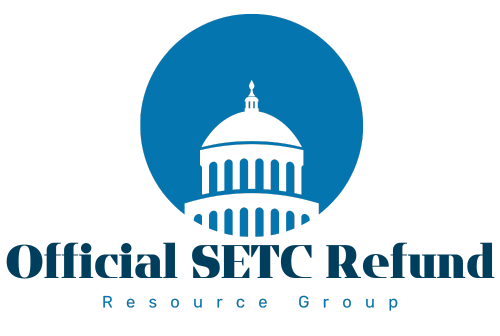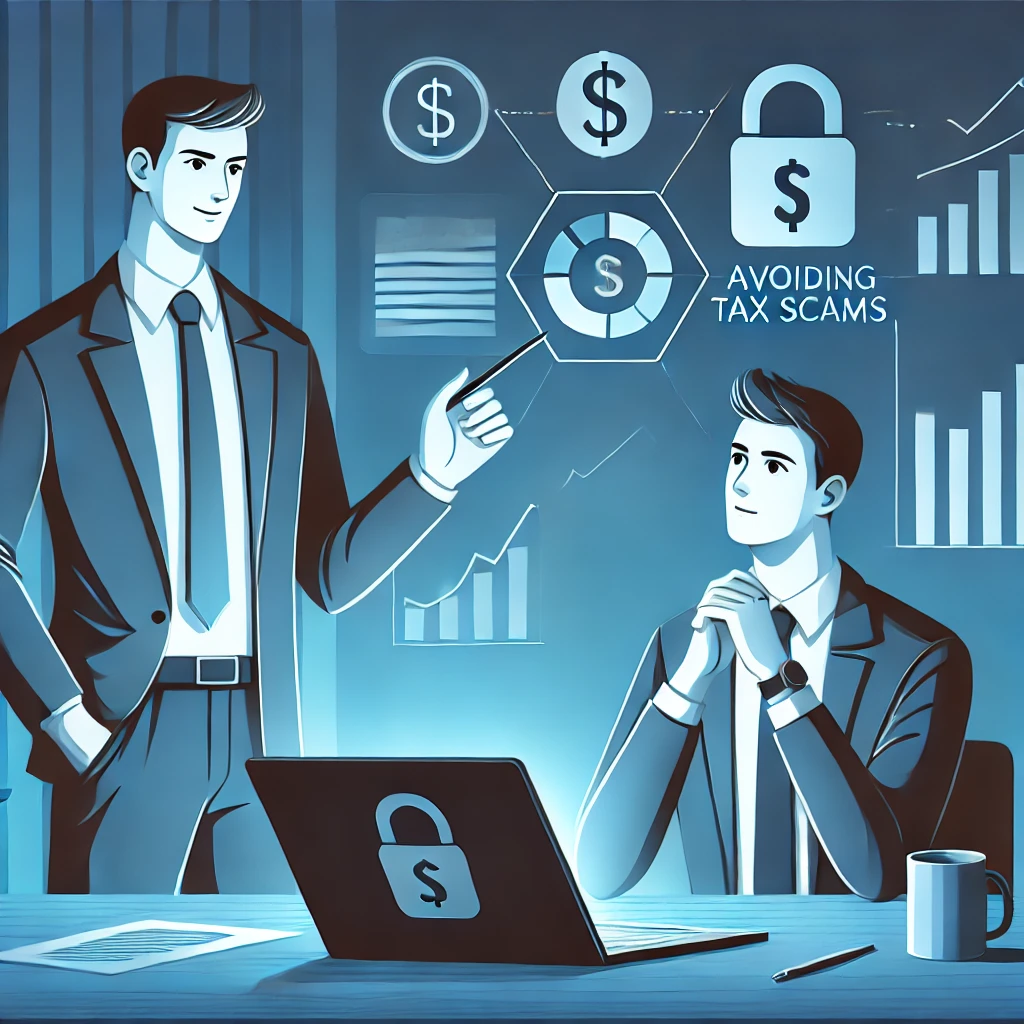Table of Contents
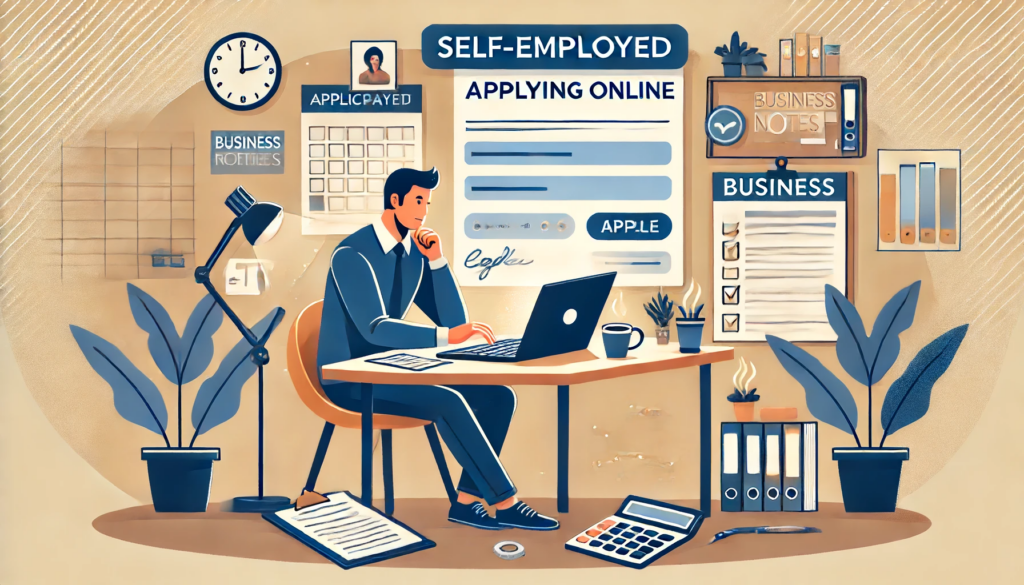
Introduction
This comprehensive guide explains the Self-Employed Tax Credit (SETC Tax Credit) in detail, following a logical progression from basic concepts to more advanced topics.
The “Basic SETC Concepts” section provides an overview of the program and how it works, giving you a solid foundation of knowledge.
For those seeking deeper insights, the “Advanced Concepts” section dives into the intricacies and inner workings of the SETC and validates the program using official IRS references and citations.
At any point, you can click here to access our online calculator tool to estimate your potential refund and seamlessly begin an electronic SETC application. Our licensed accounting partners will handle the complexities for you. There are no upfront costs – you pay only after receiving your funds.
Whether you need a basic understanding or an in-depth exploration, this guide equips you with the knowledge to maximize your SETC benefits.
Basic SETC Tax Credit Concepts Covered
- What the SETC Tax Credit actually is and why understanding its relationship to traditional employer-provided sick and family leave benefits is important to understand.
- How refundable tax credits work, including special considerations for those who owe money to the government.
- The maximum amount an individual can receive from the SETC and the factors that determine the awarded amount.
- Who is eligible for the SETC and examples of what being self-employed may look like.
- The specific COVID-19 impact requirements to qualify for the SETC.
- How to Apply for the Self-Employed Tax Credit
- The legislation powering the IRS “Self-Employed Tax Credit”
- The concept of “claimable periods” established by the FFCRA, the Consolidated Appropriations Act, and the American Rescue Plan Act.
- Types of qualifying pandemic impact (leave types)
- The maximum number of days, daily caps, and maximum credits that can be claimed under the SETC.
- How the leave credits are calculated based on the individual’s average daily self-employment income and the applicable daily caps.
- The process of claiming the Self-Employed Tax Credit, including the forms that need to be completed and filed by a licensed CPA.

What is the SETC Tax Credit?
Before we explain what the Self-Employed Tax Credit (aka SETC Tax Credit) is – we need to provide some context. In a traditional company, sick and family leave is a common benefit. This benefit allows an employee to take extended paid time off to deal with an eligible illness or to care for a family member facing an eligible situation. While not always due to illness, the reason for the leave is ultimately a health or health-adjacent situation that prevents the employee from working.
This benefit is provided to employees even if they don’t have sufficient sick or vacation time to cover the absence. During the pandemic, millions of traditionally employed individuals benefited from this arrangement. The self-employed tax credit (SETC) is the government’s way of ensuring that self-employed individuals receive a similar benefit.
During the pandemic, if a self-employed person needed to take time off, they would not receive any income. If they needed to care for family and couldn’t work, they would simply lose out on the potential earnings. The SETC is meant to address this issue and does so by way of a “refundable tax credit.”
It’s worth noting that the IRS does not use the term “self-employed tax credit.” As a result, when researching this tax credit, you won’t find much information from the IRS using this specific term. In our “Advanced SETC” section below, we will explain in detail where the “SETC” is found in IRS documentation and how the IRS explains it.
How Does a Refundable Tax Credit Work?
The government often provides financial assistance through a mechanism called a refundable tax credit. This means that you might receive a check from the government through the IRS regardless of the amount you paid in taxes.
Special Considerations
If You Owe Money: If you owe the government money for any reason (such as back taxes or child support), they will reduce the amount they send you by the amount you owe.
Example: Imagine you qualify for a $1,000 refundable tax credit, but you owe $300 in back taxes. Instead of sending you $1,000, the government will deduct the $300 you owe and send you a check for $700.
No Limit Based on Taxes Paid: The money you receive is not limited by how much you paid in taxes. Even if you paid zero taxes, you could still receive a full refund check if you qualify.
Example: Suppose you didn’t earn enough to pay any taxes, so your tax payment for the year was $0. If you qualify for a $1,000 refundable tax credit, the government will send you a check for the full $1,000 because the credit you qualify for is not limited by the amount of taxes you paid.
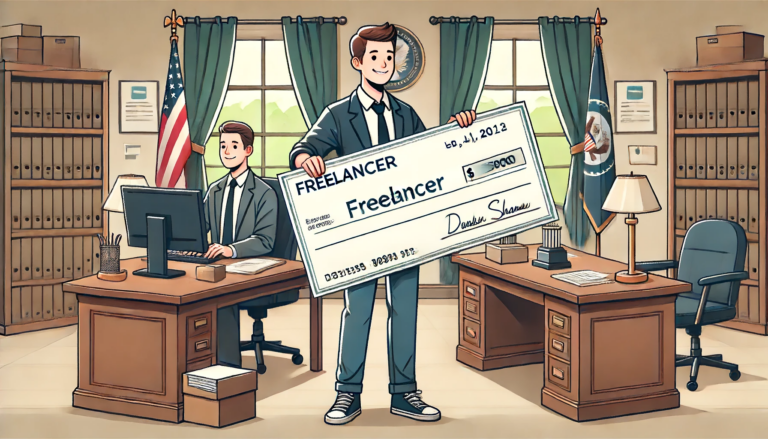
How much can you receive from the SETC Tax Credit?
The maximum amount a single individual can receive through the refundable tax credit for the SETC is $32,220. The dollar amount awarded is based on the type of impact experienced, the duration of the impact, the timing of the impact, and the individual’s total average income. A detailed breakdown of this figure is provided in the “Advanced SETC” section below.
Who is eligible for the SETC Tax Credit?
Individuals receiving self-employed income are eligible for the SETC Tax Credit (even if they also work a traditional job). It’s important to note that being eligible means meeting the requirements to apply, but it does not necessarily mean qualifying to receive funds. We will delve into the qualification requirements in the next section. However, first, let’s explore some examples of what being self-employed may entail, as it is not a one-size-fits-all scenario:
The following are examples of individuals who would be eligible for the Self-Employed Tax Credit (SETC), including edge cases where they have both W-2 and self-employment income:
Freelancers/Independent Contractors
- Freelance Photographer: Earns all their income from freelance photography gigs reported on a 1040 Schedule C. They do not have any W-2 income.
- Freelance Translator: Works as an independent contractor providing translation services to various clients. They receive 1099-NEC forms from their clients and file a Schedule C.
- Freelance Tutor: Provides tutoring services to students and reports the income on Schedule C. Tutoring is their sole occupation.
- Freelance Musician: Performs at various venues and events as an independent contractor. They report their income and expenses on Schedule C and do not have any W-2 income.
- Freelance Accountant: Provides accounting services to multiple clients as a sole proprietor. They file a Schedule C and do not have any other sources of income.
Business Owners
- Etsy Shop Owner: Runs an online store selling handmade crafts and reports the income and expenses on Schedule C. This is their only source of income.
- Food Truck Owner: Operates a food truck business and files a Schedule C to report the income and expenses. They do not have a W-2 job.
- Yoga Instructor: Teaches classes at multiple yoga studios as an independent contractor (receives 1099-MISC forms). They do not have any other sources of income.
- Real Estate Agent: An independent contractor (receives 1099-MISC forms) but also has a W-2 job teaching real estate classes at a local community college.
Rental Income
- Airbnb Host: Rents out a property and reports that rental income on Schedule E but also has a regular W-2 job.
Other Examples
- Consultant: Runs their own consulting business (files Schedule C) but also works part-time as a W-2 employee for a firm in their industry.
- YouTuber/Influencer: Earns self-employment income from sponsorships, affiliates, etc., but also has a W-2 job working remotely.
- Graphic Designer: A sole proprietor (files Schedule C) but also works part-time as a W-2 employee at a local print shop.
- Handyman/Contractor: Runs their own business but also works part-time as a W-2 employee at a home improvement store.

How to Qualify for the SETC Tax Credit
To qualify for the SETC Tax Credit, you must have been negatively impacted by COVID-19. The specific impact requirements are essentially:
- You were subject to a federal, state, or local quarantine or isolation order related to COVID-19.
- You were advised by a healthcare provider to self-quarantine due to concerns related to COVID-19.
- You were experiencing COVID-19 symptoms and seeking a medical diagnosis.
- You were obtaining immunization related to COVID-19 or recovering from any injury, disability, illness, or condition related to the vaccination.
- You were caring for someone subject to a federal, state, or local quarantine or isolation order related to COVID-19.
- You were caring for someone who was advised by a healthcare provider to self-quarantine due to concerns related to COVID-19.
- You were caring for your child whose school or place of care was closed, or whose childcare provider was unavailable due to COVID-19 precautions.
- You were experiencing any other substantially similar condition specified by the U.S. Department of Health and Human Services.
- You were unable to work due to the need to care for your child under 18 years of age if the child’s school or place of care was closed, or the childcare provider was unavailable due to a public health emergency (i.e., COVID-19).
If you were self-employed and experienced any of these COVID-19 situations during 2020 or 2021, then you would be eligible for the SETC because you are self-employed, and you would likely qualify as you meet the impact requirements.
Advanced Concept Preview: Claimable Period
To be eligible for the refundable Self-Employed Tax Credit (SETC), an individual must have been adversely affected by COVID-19 during 2020 or 2021. However, this negative impact must have occurred within a specific timeframe, as outlined in the “Advanced SETC” section below. Merely experiencing the situations mentioned during those years does not automatically qualify an individual for the credit.
In summary, if you were self-employed in 2020 or 2021 and COVID-19 negatively impacted your ability to work in a qualifying way during the claimable period, you may be entitled to relief funds through this refundable tax credit.
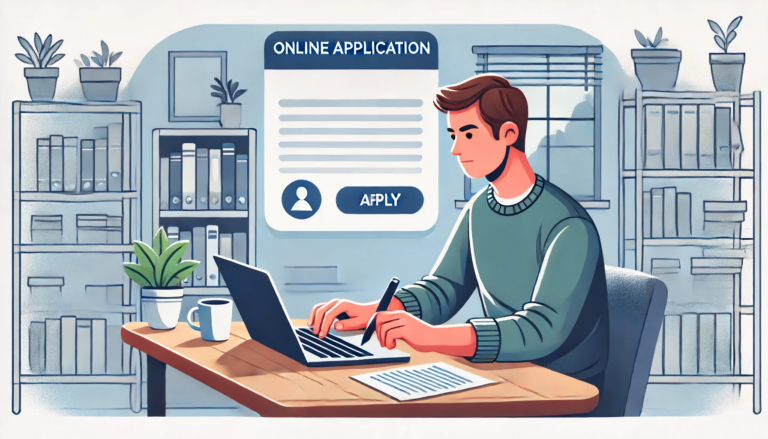
How to Apply for the SETC Tax Credit
Note: You can estimate your refund using this tool. Upon generating a refund estimate, you’ll be given the option to electronically complete your self-employed Tax Credit Application.
- Expertise in SETC legislation and IRS guidelines
- Former IRS Auditors
- Has recovered millions in refunds for self-employed individuals
- No upfront costs – paid only after receiving your refund
The SETC Tax Credit Application Process
Applying for the SETC Tax Credit is a straightforward process that can be completed online with the help of our partner, Pinnacle Solutions, user-friendly tool. The application process consists of three simple steps:
Step 1: Estimate Your Refund Amount
Start your refund estimate on this page. This tool takes into account your self-employment income, pandemic impact, and other relevant factors to provide you with a refund estimate based on your unique situation.
Step 2: Complete the Online Application
Once you have an estimate of your refund amount, proceed to complete the online application. Pinnacle Solution’s intuitive IRS electronic filing platform will guide you through the process, and will retrieve all necessary records directly from the IRS on your behalf – no paperwork!
Step 3: Electronically Submit Application to IRS
Thanks to Pinnacle Solutions’ direct integration with the IRS, claiming the SETC Tax Credit takes most applicants less than 10 minutes on average. As former IRS Auditors, Pinnacle Solutions is committed to ensuring each applicant receives the funds they’re entitled to while maintaining full compliance with IRS guidelines, rules, and program regulations.
Advanced SETC Tax Credit Concepts
This section validates the legitimacy of the SETC Tax Credit by providing authoritative information and direct citations from official IRS publications and resources. By drawing directly from the IRS, the governing authority on all tax matters, we establish the SETC’s credibility and eligibility requirements based on the IRS’s own guidelines and regulations. Gain confidence in pursuing this tax benefit with accurate, reliable information straight from the source.
Topics Covered:
- The legislation powering the IRS “Self-Employed Tax Credit”
- The concept of “claimable periods” established by the FFCRA, the Consolidated Appropriations Act, and the American Rescue Plan Act.
- Types of FFCRA leave eligible for relief funds
- The maximum number of days, daily caps, and maximum credits that can be claimed under the SETC.
- How the leave credits are calculated based on the individual’s average daily self-employment income and the applicable daily caps.
- The process of claiming the Self-Employed Tax Credit, including the forms that need to be completed and filed by a licensed CPA.
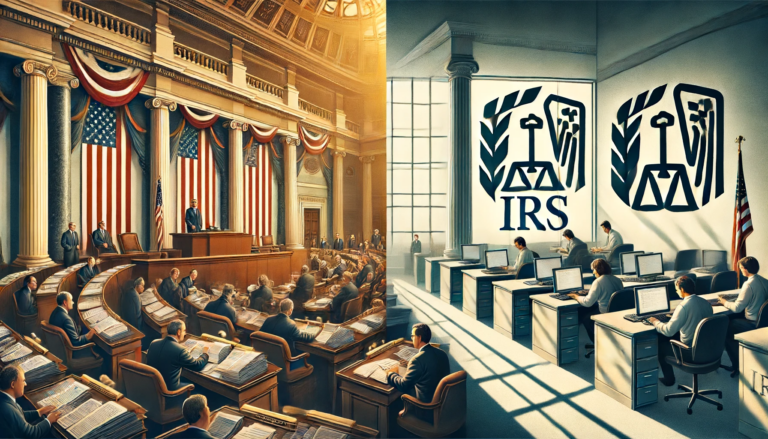
What is the SETC Tax Credit: Legislation that created it and IRS Guidelines
In March 2020, refundable tax credits were introduced for self-employed individuals who were unable to work due to COVID-19-related reasons during 2020 and 2021 through legislation known as the Families First Coronavirus Response Act (link to guide) (FFCRA).
Additional laws were later introduced that modified these FFCRA tax credits, with the primary modification being the extension of eligible claim periods and COVID-19 impact types.
The Consolidated Appropriations Act (link to bill), passed on December 27th, 2020, and the American Rescue Plan Act (link to bill), passed on March 11th, 2021, are the two congressional acts that introduced modifications to the FFCRA tax credits, bringing them to their current state.
The term “Self-Employed Tax Credit” (SETC) refers to the refundable tax credits introduced through the Families First Coronavirus Response Act (FFCRA) and subsequently modified by the Consolidated Appropriations Act (CAA) and the American Rescue Plan Act.
The Internal Revenue Service (IRS) recognizes and references the SETC through these legislative acts, providing guidelines and regulations for self-employed individuals to claim this tax credit. (IRS FAQ).
Eligibility Criteria: IRS Guidelines for the FFCRA Tax Credits (SETC Tax Credit)
Reminder: As discussed earlier in the article introduction, traditional employers typically offer various types of leave to their employees such as personal sick leave and family leave, with each leave type having its own unique qualification requirements. The FFCRA credits are designed to mirror these benefits.
To qualify for the “government-funded paid leave”, you must have been self-employed and experienced a qualifying negative impact as a result of COVID-19 during the “Claimable Periods” in 2020-2021.
The impact you experienced is classified under one (or more) of the following “government leave” categories:
- Sick Leave – Caring for Self
- Sick Leave – Caring for Others
- Family Leave
Each category has a maximum dollar amount based on the number of impacted days, with limits on the total claimable days per period. The leave categories and respective maximums are explained in detail towards the end of this article.
Claimable Periods
A claimable period is a designated timeframe during which you may request leave days if you experienced a qualifying event that falls under any of the three available leave categories.
Example: Think of it like a special sale’s eligibility period at the grocery store. This week only (January 1st through 5th), buy two, get one free with this coupon. The coupon’s claimable period is from January 1st to January 5th only. To be eligible for the sale, you must have a coupon, to qualify for the free item, you must buy two of said item in order to get the third free — during the claimable period of January 1st – 5th.
Period 1
The refundable tax credit for self-employed individuals (also known as the Self-Employed Tax Credit) was originally introduced by the FFCRA with an initial claimable period of April 1, 2020, through December 31, 2020. Qualifying impact (this is explained in the next section) experienced during this window of time is eligible for relief funds.
🔹 FFCRA (Families First Coronavirus Response Act)
- Enacted on April 1, 2020
- Introduced the refundable tax credit for self-employed individuals
- Claimable period: April 1, 2020, to December 31, 2020
🔹 Consolidated Appropriations Act (CAA)
- Enacted on December 27, 2020
- Extended the original FFCRA Period 1 end date from December 31, 2020, to March 31, 2021
Period 2
March 11, 2021: The American Rescue Plan Act (ARPA) was enacted, further extending the tax credits available to eligible self-employed individuals by introducing a second claimable period beginning April 1, 2021, through September 30, 2021.
The ARPA also made some modifications to the credits, such as expanding the types of leave that qualify (also known as types of COVID-19 impact) and increasing the cap on wages eligible for the family leave credit.
🔹 Period 2: April 1, 2021 – September 30, 2021
- Introduced by American Rescue Plan Act (ARPA) on March 11, 2021
- Expanded qualifying leave types
- Increased wage cap for family leave credit
In summary, if you experienced a qualifying impact during Period 1 (April 1, 2020 – March 31, 2021) or Period 2 (April 1, 2021 – September 30, 2021), you may be entitled to relief funds through the Self-Employed Tax Credit.
Types of Qualifying Impact (Leave Categories)
Sick Leave (Self):
- You were subject to a federal, state, or local quarantine or isolation order related to COVID-19.
- You were advised by a health care provider to self-quarantine due to concerns related to COVID-19.
- You were experiencing COVID-19 symptoms and seeking a medical diagnosis.
- You were obtaining immunization related to COVID-19 or recovering from any injury, disability, illness, or condition related to the vaccination.
Example Leave Day: On July 15, 2020 (during Period 1), you experienced COVID-19 symptoms like fever, cough, and fatigue. You went to get tested for COVID-19 and had to self-quarantine while awaiting the results. This would qualify as a “Sick Leave (Self) for the duration of your impact since you were experiencing COVID-19 symptoms and seeking a medical diagnosis.
Sick Leave (Caring for Others):
- You were caring for someone subject to a federal, state, or local quarantine or isolation order related to COVID-19.
- You were caring for someone who was advised by a health care provider to self-quarantine due to concerns related to COVID-19.
- You were caring for your child whose school or place of care was closed, or whose child care provider was unavailable due to COVID-19 precautions.
- You were experiencing any other substantially similar condition specified by the U.S. Department of Health and Human Services.
Example Leave Day: On May 10, 2021 (during Period 2), your elderly parent who you provide care for tested positive for COVID-19. Their doctor advised them to self-quarantine, so you had to take time off work to care for them during their quarantine period. The days missed would qualify under the “Sick Leave – Caring for Others” category.
Family Leave:
You were unable to work due to the need to care for your child under 18 years of age if the child’s school or place of care was closed, or the child care provider was unavailable due to a public health emergency (i.e., COVID-19).
Example Leave Day: On September 1, 2020 (during Period 1), your child’s school closed down due to COVID-19 precautions in the area. With no other childcare available, you had to take time off work to care for your child who was home from school. The days missed would qualify under the “Family Leave” category.
Verify Understanding: We now understand that “leave days” fall within three categories: Sick Leave (Caring for Self), Sick Leave (Caring for Others), and Family Leave. To qualify for relief funds, you must have had a “leave day” (an impact by COVID-19 that meets the requirement for any of the three leave categories) during a claimable period.
Up Next: We will learn how the leave days translate into relief funds and the limitations involved with the funds available for each claimable period.
The Maximum Number of Days, Daily Caps, and Maximum Credits That Can Be Claimed Under the SETC
Period 1: April 1, 2020 – March 31, 2021
🔹 Sick Leave (Self)
Maximum Days: 10
Daily Cap: $511
Maximum Credit: $5,110
🔹 Sick Leave (Caring for Others)
Maximum Days: 10
Daily Cap: $200
Maximum Credit: $2,000
🔹 Family Leave
Maximum Days: 50
Daily Cap: $200
Maximum Credit: $10,000
🔹 Total for Period 1
$17,110
The actual daily credit for each leave type is based on the individual’s income, but the figures presented in the table are the maximum possible amounts. The maximum claimable credits for Period 1 are calculated as follows:
- Sick Leave (Self): The daily cap is $511, and the maximum number of days is 10. Therefore, the maximum credit for this category is $5,110 per period ($511 × 10 days).
- Sick Leave (Caring for Others): The daily cap is $200, and the maximum number of days is 10. Therefore, the maximum credit for this category is $2,000 per period ($200 × 10 days).
- Family Leave: In Period 1, the daily cap is $200, and the maximum number of days is 50. Therefore, the maximum credit for this category in Period 1 is $10,000 ($200 × 50 days).
Period 2 April 1, 2021 – September 30, 2021
🔹 Sick Leave (Self)
Maximum Days: 10
Daily Cap: $511
Maximum Credit: $5,110
🔹 Sick Leave (Caring for Others)
Maximum Days: 10
Daily Cap: $200
Maximum Credit: $2,000
🔹 Family Leave
Maximum Days: 60
Daily Cap: $200
Maximum Credit: $12,000
🔹 Total for Period 2
$19,110
The actual daily credit for each leave type is based on the individual’s income, but the figures presented in the table are the maximum possible amounts. The maximum claimable credits for Period 2 are calculated as follows:
- Sick Leave (Self): The daily cap is $511, and the maximum number of days is 10. Therefore, the maximum credit for this category is $5,110 per period ($511 × 10 days).
- Sick Leave (Caring for Others): The daily cap is $200, and the maximum number of days is 10. Therefore, the maximum credit for this category is $2,000 per period ($200 × 10 days).
- Family Leave: In Period 2, the daily cap is $200, and the maximum number of days increased to 60. Therefore, the maximum credit for this category in Period 2 is $12,000 ($200 × 60 days).
The total maximum Self-Employed Tax Credit (SETC) that eligible individuals can claim for the combined years of 2020 and 2021 is $32,220. This figure is derived by adding the maximum credits from both periods:
Period 1 Total: $17,110
Period 2 Total: $19,110
Grand Total (Period 1 + Period 2): $17,110 + $19,110 = $32,220
Example:
Let’s consider the story of Sarah, a self-employed graphic designer. During Period 1 (April 1, 2020 – March 31, 2021), Sarah faced various challenges related to the COVID-19 pandemic:
- Sarah was ill with COVID-19 symptoms and had to self-isolate for 8 days while awaiting her test results. This qualifies as “Sick Leave (Self)” and entitles her to claim up to 8 days of sick leave credits.
- Sarah’s spouse contracted COVID-19, and she had to care for them for 4 days while they were in quarantine. This qualifies as “Sick Leave (Caring for Others)” and entitles her to claim up to 4 days of sick leave credits.
- Sarah’s children’s school closed due to COVID-19 precautions, and she had to care for them at home for 40 days. This qualifies as “Family Leave” and entitles her to claim up to 40 days of family leave credits.
Based on the time Sarah was unable to work due to these COVID-19-related circumstances, she can calculate her leave credits as follows:
- Sick Leave (Self): 8 days × Sarah’s average daily self-employment income (up to $511 per day)
- Sick Leave (Caring for Others): 4 days × Sarah’s average daily self-employment income (up to $200 per day)
- Family Leave: 40 days × Sarah’s average daily self-employment income (up to $200 per day)
Sarah’s total leave credits (SETC refund) will be the sum of these amounts, subject to the maximum limits for each category as outlined in the tables for Period 1.
This example demonstrates that the type of leave credit (sick leave or family leave) is determined by the specific COVID-19-related impact Sarah experienced. The total value of her leave credits is calculated based on the number of days she was unable to work due to each qualifying reason, multiplied by her average daily self-employment income, up to the applicable daily caps.
How the SETC Tax Credit is Claimed:
A licensed CPA with Anchor Financial Group will:
- Verify your self-employed eligibility
- Complete Form 7202, “Credits for Sick Leave and Family Leave for Certain Self-Employed Individuals,” to determine your qualified sick and family leave equivalent tax credits (Self-Employed Tax Credit) .
- File Form 1040X to amend the original tax return for the applicable tax year (2020 or 2021).
- Form 7202 will be attached to the amended Form 1040X when submitting it to the IRS.
- If you chose the fast funding option, your funds will be disbursed to you approximately 15 days after the IRS acknowledges receipt of your claim. Alternatively, if you selected the traditional disbursement method, you can expect to receive your funds within 5-6 months of the IRS’ acknowledgement.

A dedicated financial consultant with extensive expertise in tax strategies for self-employed individuals including freelancers, gig workers, and independent contractors. With a focus on maximizing tax benefits, Richard expertly guides clients through the nuances of the Self-Employed Tax Credit, ensuring they leverage every available opportunity to reduce their tax liabilities.
